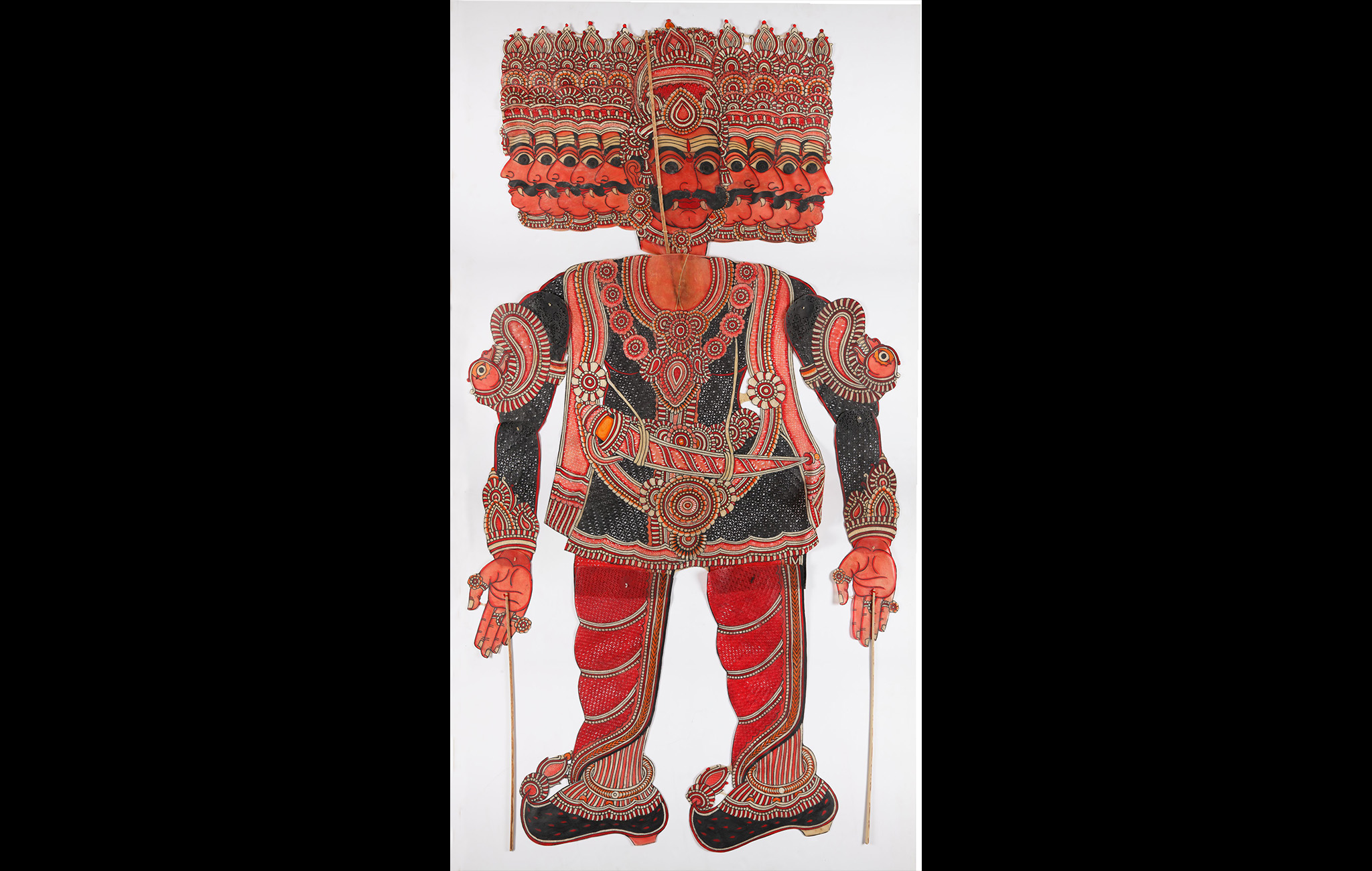
This shadow puppet of Ravana is from Tholu Bommalaata, puppet tradition of Andhra Pradesh in India. Here, tholu means leather, bommalu means puppets and aata means dance.
In Valmiki’s Ramayana, Ravana is portrayed as an opposition to Rama; the evil against the good. Ravana is a devout worshipper of Shiva. Apart from his physical characteristics, he is said to possess in-depth knowledge of the sacred texts, medicines, etc. After he abducts Sita, Rama wages war against him which ultimately leads to Ravana’s destruction. Various other retellings of Ramayana, such as the Jaina Traditions, describe him as more of a tragic personality compared to Valmiki’s portrayal of the Asura King. He is a character of mixed complexities and regarded as a mighty king in Srilanka. Locals in a village in UP, Bisrakh, claim the region to be the birthplace of Ravana.
One of the versatile proponents of this Tholu Bommalaata is Sindhe Chithambara Rao. He is a National award-winning puppeteer who lives in the village of Dharmavaram in Andhra Pradesh. Chithambara Rao’s great-grandfather, Nayanappa Rao, was the first puppeteer in the family. He migrated from Solapur district in Maharashtra to Kolar district in Karnataka and developed his puppetry skills by building relationships with the local puppeteers. From the age of 8, Chithambara Rao trained under his father in the art of shadow puppetry, carefully observing his father, elder sister and brother synchronise the puppets with their storytelling melodies. Today, Chithambara Rao’s troupe Chaya Nataka Brundam has performed in cultural forums across India, Europe, South America, Egypt, and Oman.
To read more about Tholu Bommalaata, click here.
Title
RavanPeriod
late 20th - early 21st centuryArtist
Sindhe Chithambara RaoMedium
Vegetable and Poster colour on animal hideDimensions
H: 213.5 cm x W: 75.9 cmAccession No.
2017.51.11Genre: Indigenous & Tribal Art
